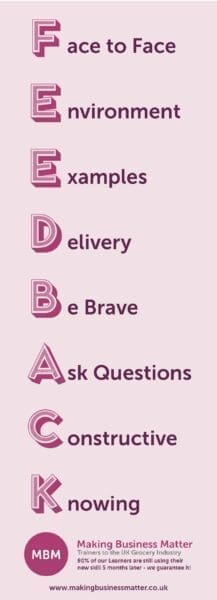What is Outsourced Training? What do You Mean by Outsourcing?
Outsourcing Training is becoming a common choice for many companies because it provides the flexibility on costs that they need in a fast-moving world, and it is cheaper.
Outsourced training is when a company chooses to use an external company, a supplier, to manage and deliver their training. Obviously a company can choose for a supplier to deliver the training whilst they manage the programme. Never will you see a company that outsources the management of training and yet delivers the training.
Why Would Companies Outsource Training?
Companies make this decision for any one or all of these 7 reasons:
- The expertise to manage the training is not within the skillset of the people that work at the company.
- A company chooses not to commit to employing an L&D Manager (£48k) to manage the training.
- There is little or no experience of how to deliver training effectively, i.e. No experienced trainers.
- Management wants to remain flexible on training costs so that in ‘hard times’ they can exit quickly and easily.
- Often internal trainers become native, ceasing to challenge Learners because they have too much empathy.
- Outsourcing training allows a company to focus on what it is good at.
- It is 20-35% cheaper, according to a $4.5bn American technology company.
How do You Train an Outsourced Employee?
Simple. The same way you train any employee. Outsourced or one of your own. This is because there are bigger challenges in learning and development than how to differentiate the training of employees vs outsourced personnel. For example, enabling employees to come back from training courses and to change their behaviour, is the biggest challenge. Too many employees come back from a training course and do nothing differently. Waste of time and money!
What are the Advantages and Disadvantages of Outsourcing Training?
Sticky Learning ® is 7 times more effective than 1-day training courses. Plus, you will get a Chain of Evidence proving your Return on Investment. Discover soft skills training that changes behaviours long term.

Disadvantage – Costly?
Some companies believe that they have enough experience within their own employees. Therefore they create their own training programmes, which saves money. The challenge is whether a trainer with no experience of delivery, learning styles, Ebbinghaus’ Forgetting Curve, and so on, can achieve real behavioural change. We do not believe so.
Our single reason for this belief is that we see time and time again senior people standing in front of groups of their employees and sharing the benefit of their experience. This is not training. The employees are unlikely to change their behaviours. This is not training. At best, it can only be described as ‘Group Mentoring’ and done badly.

Disadvantage – Lack of Understanding?
An outside company cannot understand the culture of another company as well as an employee. They simply cannot. Agreed. In the case of a training provider, they will not know ‘how things are done around here’. The disadvantage is that the training provider will train employees, for example, in how to manage an Outlook email inbox, when the employees use Gmail.
The key to solving this problem is in the training needs analysis. The piece where a good training provider identifies the behaviour that is needed and designs an intervention that makes the behaviour stick.
Disadvantage – Travel Time
Employees are asked to attend training on the premises of the training provider or at a given location. This means that typically employees have to travel for over an hour before and after the training, and possibly stay overnight. Time wasted for the company employee.
A simple solution is to hold the training on-site or at a venue near the company.
Advantage – 7 Reasons to Outsource Training
- The expertise does not exist in the company and needs to be brought-in, e.g. Category Management.
- No need to pay for a Training Officer or an L&D Manager to manage the training.
- Experienced trainers know how to get the best from their Learners. For example, by understanding their learning styles.
- Management wants to remain flexible on training costs so that in ‘hard times’ they can exit quickly and easily.
- Often internal trainers become native, ceasing to challenge Learners because they have too much empathy.
- Outsourcing training allows a company to focus on what it is good at.
- To outsource training is 20-35% cheaper, according to a $4.5bn American technology company.
How do You Manage Outsourcing Training?
Easily. In the same way, you manage any supplier. The key to outsourcing a training provider is to set targets and measure results. In essence, manage them. Many training providers will tell you that measuring training is the holy grail, and impossible. Don’t listen to them. Yes, it is hard. It is not impossible. Arriving at an absolute is very hard. Identifying that significant behavioural change has happened with your Learners and that it has had an impact on results, is very possible.
In 1953 Donald Kirkpatrick identified 4 levels of learning measure; Reaction, Learning, Behaviour, and Results. For every training course we provide, we offer a Chain of Evidence. A 5-level measure of what that training course achieved. It uses Kirkpatrick’s original mode, and we have added a measure, as recommended by CIPD, of the stakeholder’s perspective. This last measure captures the stakeholder/s perspectives and measures against them.
Why You Should Not Use Your People to Train Your People?
We worked with a company some years ago that had their salespeople train their salespeople. The attendees of the course loved it. The people that delivered the course had no time but loved doing it. So, why change?
The problem was that the people that delivered the course were senior because they had the experience. It made sense. Often the people attending the training course worked for those people directly. The MD sensed something wasn’t quite right and asked us to investigate. We asked the attendees what they thought of the training. Publically, they evaluated it as good. Privately they shared that they were just talked at for 8 hours. It was a little like ‘marking your own homework’. Thankfully the MD’s instincts were right.
In this case, salespeople were good salespeople. Not great trainers. Salespeople should sell, and trainers should train.
The best combination of skills is for the trainer to understand what works and does not work in the company from talking to the stakeholders. By listening to what they see and what behaviours they want their people to start doing. Then, design the learning program to achieve the desires results through a blended learning programme. Or 70:20:10:

How Would an Outsourced Training Programme Work in Reality?
There are 7 steps to successfully outsourcing your training programme. They are as follows:
1. Knowing the Company’s Objectives
The training provider and the stakeholders meet to discuss the company’s goals. To know what the company is trying to achieve in the short, medium, and long term. This is so that the training provider can brief the trainers in order that they understand the context of the training, and can link leanings to the company’s future plans.
2. Training Needs Analysis
This is a 3-stage process; Stakeholders, Learners’ Interviews, and Learners’ Survey. The first stage is to meet with the stakeholders to understand what dials they want to turn, e.g. sales. And what behaviours they want their people to adopt. The second stage is to interview a cross-section of the Learners. About 10%. To understand what they need. The final stage is to design and send a survey to all Learners asking what they need.
3. Present the Programme – Part One
Having analysed the information from the Training Needs Analysis (TNA) a 3-year training programme is presented to the stakeholders for their feedback. The programme includes skills trained, time taken away from the business by Learners, and the elements of blended learning used. It is then adjusted based on their feedback.
4. Present the Programme – Part Two
The programme includes how success will be measured. This is based on our 5-level Chain of Evidence. Quarterly milestones are agreed, along with a monthly dashboard that will be circulated.
5. Present the Programme – Part Three
A communication plan, along with a reward and recognition mechanism support the programme. Both are designed to buy-in the Learners and then to motivate the Learners to change their behaviours.
6. Launch the Programme
The training programme is launched. Branded and with fanfare. There is an opportunity for the Learners to ask questions, explore the programme, and understand that it has been designed from their feedback, with them in mind, and for them.
7. Delivering the Programme – Pilot
The trainers deliver the first few training days to the Learners. Extensive feedback is sought. The programme is adjusted and then a further chunk of training delivery takes place. Extensive feedback sought, and the programme adjusted before the programme is ready for a wider roll-out.

Considering Outsourcing Your Training?
Worried your in house training is missing the mark? Take a look at how our training courses could meet your needs.




